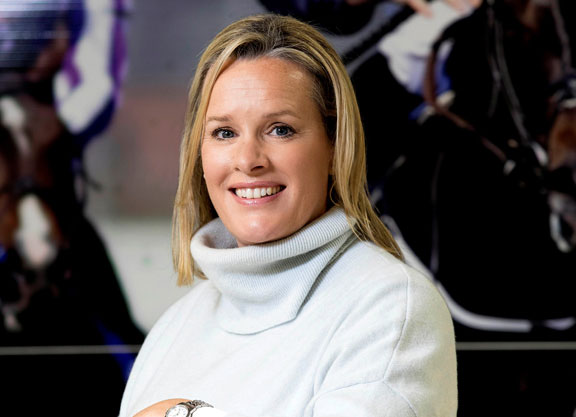By Bill Finley
Plusvital Ltd, an Irish-based company that is considered among the leaders in the study of equine genetics and the equine genome, announced Thursday that it is working with The Jockey Club regarding the breed registry's proposal to cap the number of mares a stallion can be bred to at 140.
A genome is an organism's set of complete DNA, including all of its genes. The horse genome was released in 2007, soon after research was completed on the genomes for humans and other species.
Plusvital's research team, led by Chief Science Officer Professor Emmeline Hill, has extensive experience in Thoroughbred genomics research including investigating inbreeding. Professor Hill is a leading figure in the international equine genomics research community, having first discovered the “Speed Gene” in Thoroughbreds in 2007, and leads a research group at University College Dublin.
“Pedigree information alone will limit the development of a complete picture around this,” Hill said. “Pedigree only tells you part of the story. It can be useful in highlighting trends in breeding practices, but it doesn't have the resolution to reflect true genetic relationships. There are many studies that show using pedigree based estimates for inbreeding are less accurate than genomic measures. That's because pedigree has no way of showing what genes are actually inherited from generation to generation. What genomics allows is a measure of the true genetic relationship between individuals.”
Hill said she has already done much research involving Thoroughbred inbreeding but cannot release any information until her work passes the peer review process.
Hill says that inbreeding, left unchecked, can become a problems for a species. She uses dog and cattle breeding as examples where inbreeding has had serious consequences.
“The real problem with inbreeding is that it can have serious negative consequences in the population, which may not be apparent in the short term,” she said. “But it's the long term viability of the population that is the concern when inbreeding is a factor. Inbreeding arises generally when there is either very strong selection for favorable traits or there is a disproportionate use of related bloodlines. What it does is it can reduce genetic diversity in a population and lead to what is known as inbreeding depression. It's been well-established that highly inbred regions of the genome are associated with a high proportion of deleterious mutations. This is something known as mutational load.”
Hill said she has reached no conclusions concerning whether or not there is an inbreeding problem in the American breeding industry. Her primary point is that her research and the science that is now available will be of help answering that question.
“I can't say if there is a problem or not as a result of inbreeding,” she said. “That would have to be looked at a level of inbreeding against traits that would be of concern in the industry. That is something that has been done in cattle breeds and other species and is something that should be done with Thoroughbreds. It is a welcome development to see the approach being taken to explore this issue. It allows the provision of objective information in this regard, so I am very encouraged to see the value of a data-driven approach is being considered and that genomics has a place here as a tool to explore this issue.”
The Jockey Club announced Sept. 6 that it was considering a rule to limit the number of mares a horse can be bred to because it was “concerned with the narrowing diversity of the Thoroughbred gene pool.” It noted from 2010 the number of stallions bred to 140 mares or more was 24 and that it now stands at 43. As for mares, the Jockey Club reported that by 2019, 7,415 mares (27% of the total) were covered by stallions with books of more than 140, a threefold increase.
“The combination of these changes has resulted in a substantial increase in the percentage of foals produced by a discrete segment of stallions-signaling a worrisome concentration of the gene pool,” the Jockey Club said in a press release.
Yet there have been no obvious signs that inbreeding has been affecting the breed in a negative way. Hill said that while that may be so, it is vital to stay ahead of the issue and make sure inbreeding does not get to the point where it becomes a problem, perhaps an irreversible problem.
“In the short term it might appear that the status quo is acceptable,” she said. “But problems like this can be like icebergs. What you can see of an iceberg from above the water might appear to be something you can navigate around. But what is under the water might be 100 times bigger and trying to get around that, steering around that, might be very problematic. I'm not in a position to say if inbreeding right now is or is not a problem. We believe inbreeding levels are increasing. There is data out there that already shows this. From scientific literature already available there are multiple examples of the negative consequences of inbreeding. It is prudent of the industry to monitor this and manage it in the population in such a way that, if it is not a problem already, that it does not become a problem.”
Not a subscriber? Click here to sign up for the daily PDF or alerts.






